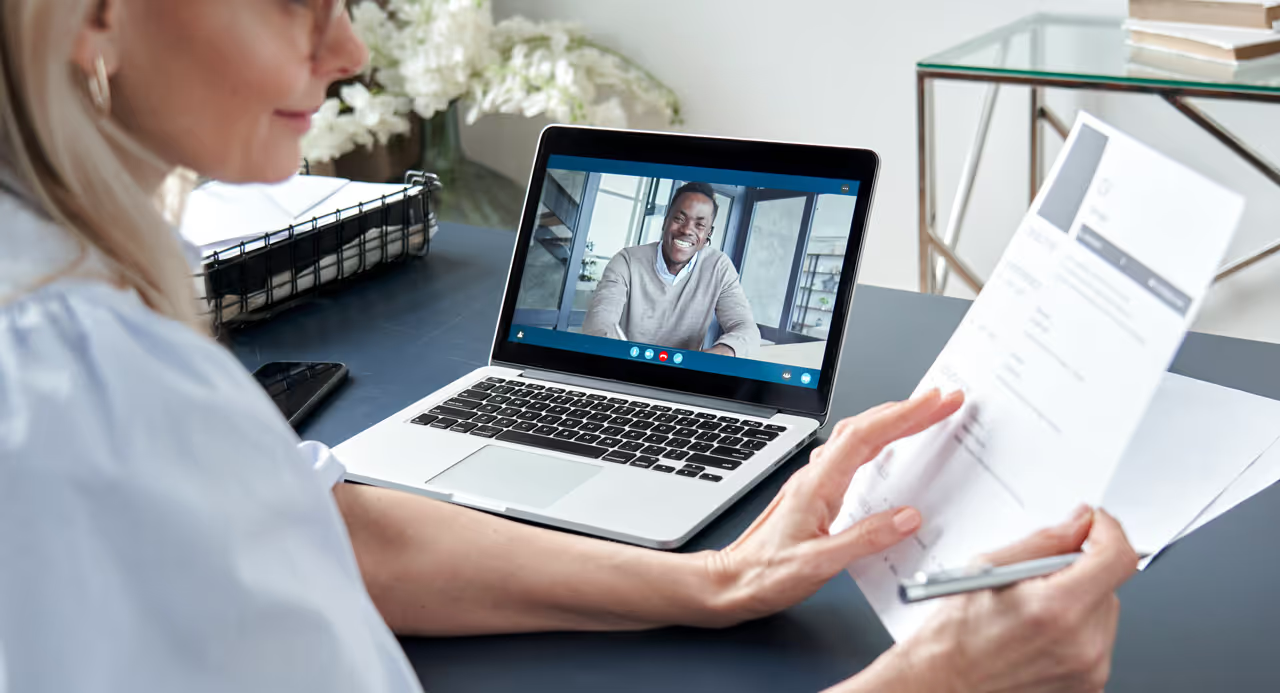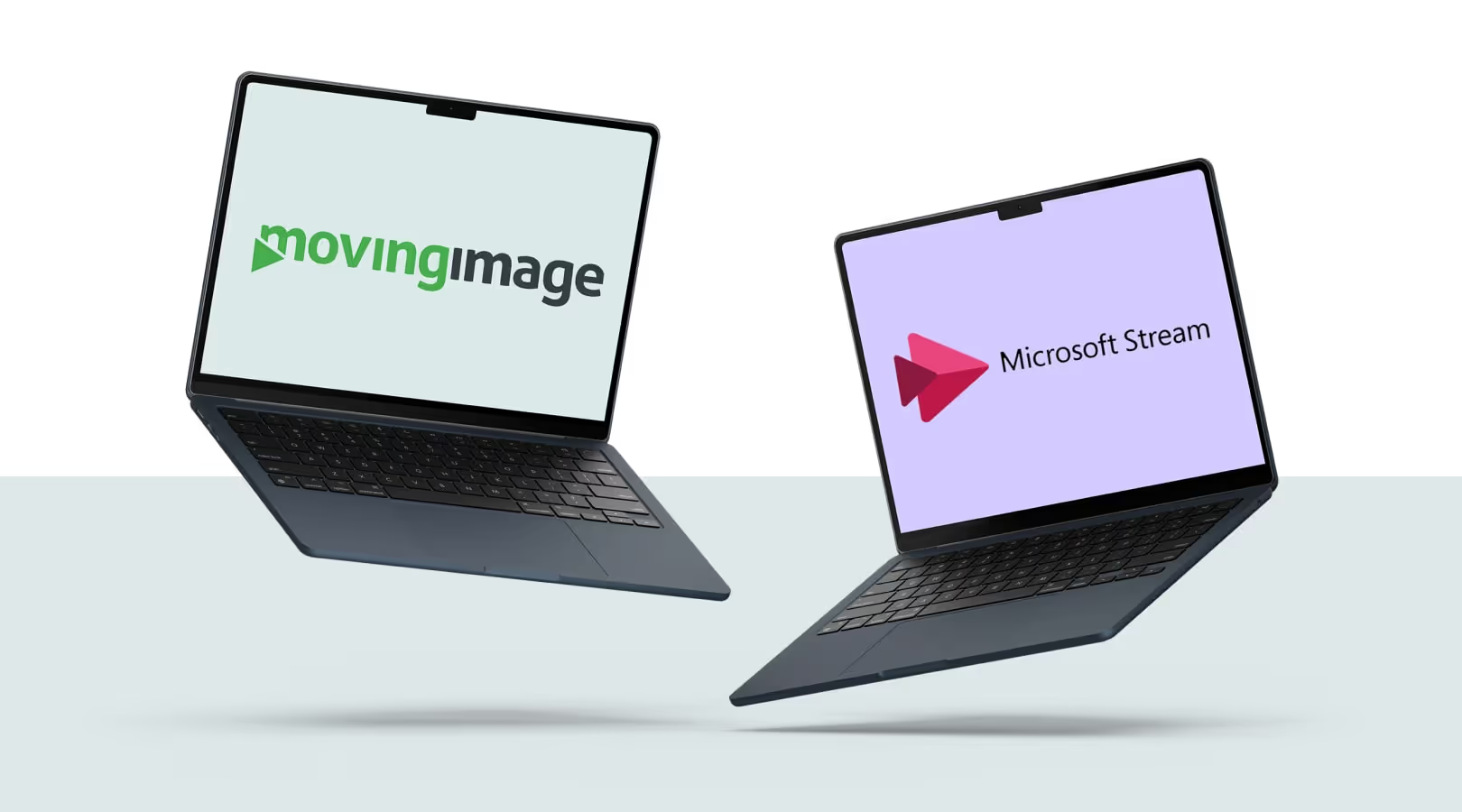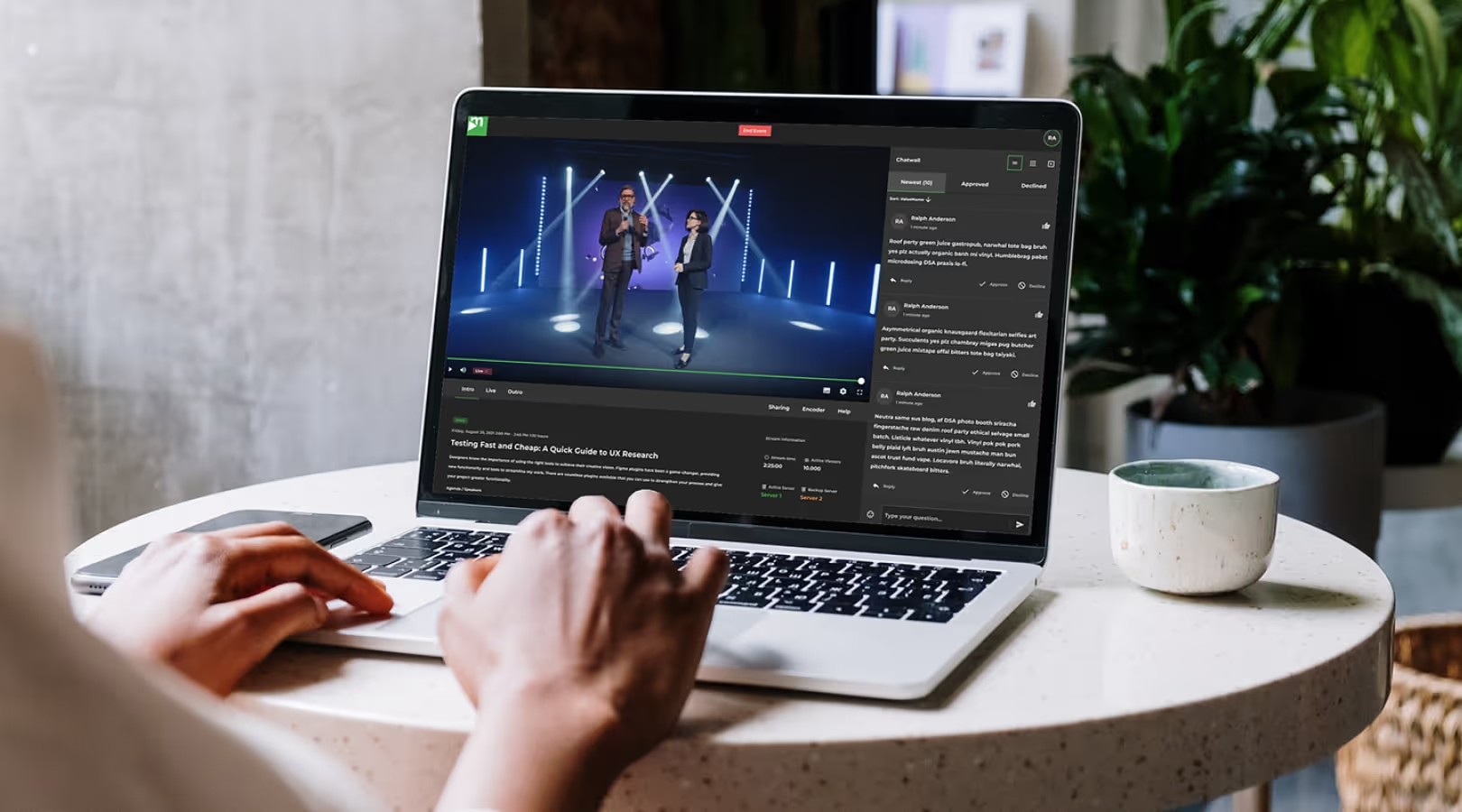5 tips for successful hybrid work

Driving your success with video

5 tips for successful hybrid work
The shift between office desks and home offices was already familiar to many before the pandemic. And during the lockdowns, countless employees experienced the benefits of working remotely — and many of them don’t want to go back.
That’s why many companies are no longer trying to get everyone back in the office full-time. Instead, they’re embracing more flexible models.
Video communication plays a key role in these hybrid work environments — and most people have had positive experiences with it. In fact, our 2022 trend study on video communication in the workplace showed that nearly half (45%) of respondents working remotely would like to see even more video used in their day-to-day work.
Employers can help employees make the most of video communication, even when working from home. That means providing solid tech infrastructure as well as the right software, tools, and gadgets. And by putting the right structures in place, companies can pave the way for productive, hybrid teamwork.
1. Enable simple and secure hybrid work
If employees are allowed to use their own devices when working remotely (or even encouraged to do so as part of a BYOD – bring your own device – policy), then the software they need must be easy to install and use. Plug-and-play is the magic word here. No one wants to miss an important meeting because of technical issues with drivers or hardware-software compatibility. Problems like these lead to frustration and stress — two things that are guaranteed to block good collaboration.
Working from home doesn’t mean lower data protection standards. Employees will still handle confidential and sensitive information, so companies need to stay compliant. Under GDPR, they remain responsible for protecting data, even when teams work from home. That’s why secure network access is essential — especially when employees are using private routers to connect to the internet.
2. The right software for hybrid workers
Staying organized is especially important in hybrid teams. Project management and online collaboration tools help everyone stay on top of their tasks and track project progress — in real time, via online dashboards. Popular tools here include factro, trello, Miro or Asana.
Hybrid work also means a different approach to communication. Real-time communication platforms like Teams and Zoom allow employees to stay in touch quickly and easily. Video calls and virtual meetings help foster a more personal connection and keep everyone involved.
When new software is introduced or new employees join the team, onboarding is key. Tutorials and training help teams become productive faster. Without them, people can quickly feel overwhelmed — leading to reduced productivity and more time spent figuring things out.
To support both remote and in-office team members, video-based training is a great solution. It allows people to learn at their own pace, on their own schedule, and from wherever they are.
3. Helpful gadgets and gear for hybrid work
Good video communication starts with good audio. A high-quality headset makes a big difference — especially for those who don’t have a separate home office. Noise-cancelling features help block out everyday distractions. And to make switching between home and office as smooth as possible, it’s a good idea to provide employees with a headset for both locations. There are well-reviewed options for every budget — from the affordable Kygo A9/600 to premium models from Bose.
Compact partitions or folding screens for home use are another smart move. Offering them free of charge shows that the company values employee privacy. These can be a more natural alternative to digital backgrounds, which don’t always suit every situation. After all, not everyone wants to show colleagues their living room during a call.
Productive meetings depend on fast, easy information sharing. In the office, that might mean using whiteboards, flipcharts, or large screens. Remote participants should have access to the same experience. 360-degree solutions like the Meeting Owl Pro replicate the in-room energy digitally, thanks to a panoramic camera that helps people feel like they’re right in the middle of the action. Interactive whiteboards also enhance participation by making it easier to share information and sketch out ideas together.
4. Structure meetings for hybrid success
Hybrid meetings can be tricky. Technical glitches, time delays, and lack of moderation can all lead to confusion or people talking over each other. Without an agenda or structure, discussions can go off the rails. Quiet team members may hesitate to speak up — and in the end, some voices dominate while others remain unheard.
To avoid this, a few simple rules can go a long way. A clear agenda, defined time slots, and concrete goals keep everyone focused. It also helps to assign a dedicated moderator — someone who ensures remote participants get their turn to speak.
Consider creating a simple guide to hybrid meetings. It could answer frequently asked questions like: “What’s an acceptable background?”, “Should we mute our mics when others are speaking?”, or “Are cameras always expected to be on?”
And don’t forget the toll that video meetings can take. “Zoom fatigue” is real. Unlike audio calls, video meetings require constant focus and camera presence — often for extended periods.
To combat video fatigue, keep meetings short, stick to core working hours, and build in regular breaks. A “meeting-free day” each week can also make a big difference, helping employees regain control of their time and stay flexible — in the true spirit of hybrid work.
5. Strengthen team spirit with hybrid events
The quick chats in the hallway, a casual exchange by the coffee machine, or a shared lunch — these social moments are harder to come by in hybrid teams. Even summer parties or holiday celebrations may no longer bring everyone together in person. And yet, these kinds of events are powerful drivers of team spirit. Kickoff sessions, too, help align everyone around shared goals and upcoming projects. They foster a sense of belonging — and with the right planning and tech, they can absolutely be hybrid.
Hybrid events are the natural response to hybrid work. Platforms for virtual events provide a robust foundation. They offer plenty of options for small-group interactions, facilitate networking, and can scale easily to accommodate large audiences.
“Hybrid” and “digital” don’t have to mean cold or impersonal. With a bit of creativity, companies can create experiences that are not only effective — but memorable too.
Our Speakers
The shift between office desks and home offices was already familiar to many before the pandemic. And during the lockdowns, countless employees experienced the benefits of working remotely — and many of them don’t want to go back.
That’s why many companies are no longer trying to get everyone back in the office full-time. Instead, they’re embracing more flexible models.
Video communication plays a key role in these hybrid work environments — and most people have had positive experiences with it. In fact, our 2022 trend study on video communication in the workplace showed that nearly half (45%) of respondents working remotely would like to see even more video used in their day-to-day work.
Employers can help employees make the most of video communication, even when working from home. That means providing solid tech infrastructure as well as the right software, tools, and gadgets. And by putting the right structures in place, companies can pave the way for productive, hybrid teamwork.
1. Enable simple and secure hybrid work
If employees are allowed to use their own devices when working remotely (or even encouraged to do so as part of a BYOD – bring your own device – policy), then the software they need must be easy to install and use. Plug-and-play is the magic word here. No one wants to miss an important meeting because of technical issues with drivers or hardware-software compatibility. Problems like these lead to frustration and stress — two things that are guaranteed to block good collaboration.
Working from home doesn’t mean lower data protection standards. Employees will still handle confidential and sensitive information, so companies need to stay compliant. Under GDPR, they remain responsible for protecting data, even when teams work from home. That’s why secure network access is essential — especially when employees are using private routers to connect to the internet.
2. The right software for hybrid workers
Staying organized is especially important in hybrid teams. Project management and online collaboration tools help everyone stay on top of their tasks and track project progress — in real time, via online dashboards. Popular tools here include factro, trello, Miro or Asana.
Hybrid work also means a different approach to communication. Real-time communication platforms like Teams and Zoom allow employees to stay in touch quickly and easily. Video calls and virtual meetings help foster a more personal connection and keep everyone involved.
When new software is introduced or new employees join the team, onboarding is key. Tutorials and training help teams become productive faster. Without them, people can quickly feel overwhelmed — leading to reduced productivity and more time spent figuring things out.
To support both remote and in-office team members, video-based training is a great solution. It allows people to learn at their own pace, on their own schedule, and from wherever they are.
3. Helpful gadgets and gear for hybrid work
Good video communication starts with good audio. A high-quality headset makes a big difference — especially for those who don’t have a separate home office. Noise-cancelling features help block out everyday distractions. And to make switching between home and office as smooth as possible, it’s a good idea to provide employees with a headset for both locations. There are well-reviewed options for every budget — from the affordable Kygo A9/600 to premium models from Bose.
Compact partitions or folding screens for home use are another smart move. Offering them free of charge shows that the company values employee privacy. These can be a more natural alternative to digital backgrounds, which don’t always suit every situation. After all, not everyone wants to show colleagues their living room during a call.
Productive meetings depend on fast, easy information sharing. In the office, that might mean using whiteboards, flipcharts, or large screens. Remote participants should have access to the same experience. 360-degree solutions like the Meeting Owl Pro replicate the in-room energy digitally, thanks to a panoramic camera that helps people feel like they’re right in the middle of the action. Interactive whiteboards also enhance participation by making it easier to share information and sketch out ideas together.
4. Structure meetings for hybrid success
Hybrid meetings can be tricky. Technical glitches, time delays, and lack of moderation can all lead to confusion or people talking over each other. Without an agenda or structure, discussions can go off the rails. Quiet team members may hesitate to speak up — and in the end, some voices dominate while others remain unheard.
To avoid this, a few simple rules can go a long way. A clear agenda, defined time slots, and concrete goals keep everyone focused. It also helps to assign a dedicated moderator — someone who ensures remote participants get their turn to speak.
Consider creating a simple guide to hybrid meetings. It could answer frequently asked questions like: “What’s an acceptable background?”, “Should we mute our mics when others are speaking?”, or “Are cameras always expected to be on?”
And don’t forget the toll that video meetings can take. “Zoom fatigue” is real. Unlike audio calls, video meetings require constant focus and camera presence — often for extended periods.
To combat video fatigue, keep meetings short, stick to core working hours, and build in regular breaks. A “meeting-free day” each week can also make a big difference, helping employees regain control of their time and stay flexible — in the true spirit of hybrid work.
5. Strengthen team spirit with hybrid events
The quick chats in the hallway, a casual exchange by the coffee machine, or a shared lunch — these social moments are harder to come by in hybrid teams. Even summer parties or holiday celebrations may no longer bring everyone together in person. And yet, these kinds of events are powerful drivers of team spirit. Kickoff sessions, too, help align everyone around shared goals and upcoming projects. They foster a sense of belonging — and with the right planning and tech, they can absolutely be hybrid.
Hybrid events are the natural response to hybrid work. Platforms for virtual events provide a robust foundation. They offer plenty of options for small-group interactions, facilitate networking, and can scale easily to accommodate large audiences.
“Hybrid” and “digital” don’t have to mean cold or impersonal. With a bit of creativity, companies can create experiences that are not only effective — but memorable too.



.avif)


.avif)






.avif)





